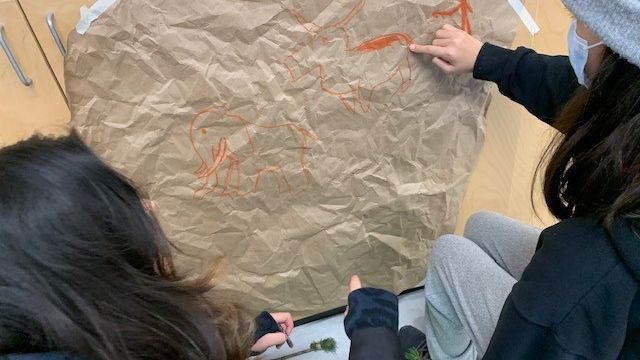Division 3 has been looking at the emergence of art as early humans developed conceptual thinking and and some understanding of themselves in relation to the world around them. Examining the cave paintings from France, Spain, and Argentina, we noticed they often pictured large animals such as mammoth, bison, horses, deer, etc. Some of the paintings featured depictions of humans and arrows or spears. Some anthropologists suggest these depictions may have been intended to “enchant” big game animals for a successful hunt. Or maybe they were recording stories from their lived experiences for future generations. The negative-space hand prints are, perhaps, the most haunting of the cave paintings. It’s almost as though you can reach out and touch our early human ancestors living in the midst of an ice age!
Earlier this week, we headed out to the forest to collect raw materials that could be combined to create painting tools. Students gathered sticks, grass, rocks, leaves, etc. Then we brought them inside to adapt the raw materials to create useable tools. We agreed that we could use twine to bind things, but no glue or tape.
Finally, we got to painting on our “cave” walls! Students worked on vertical surfaces and different heights to experience a tiny bit of what it might have been like to paint this way. Some students worked more independently, and some collaboratively in order to create their images. They attempted to work in the style of the cave paintings from France and Spain, and depicted similar subjects as well.



















Leave a Reply